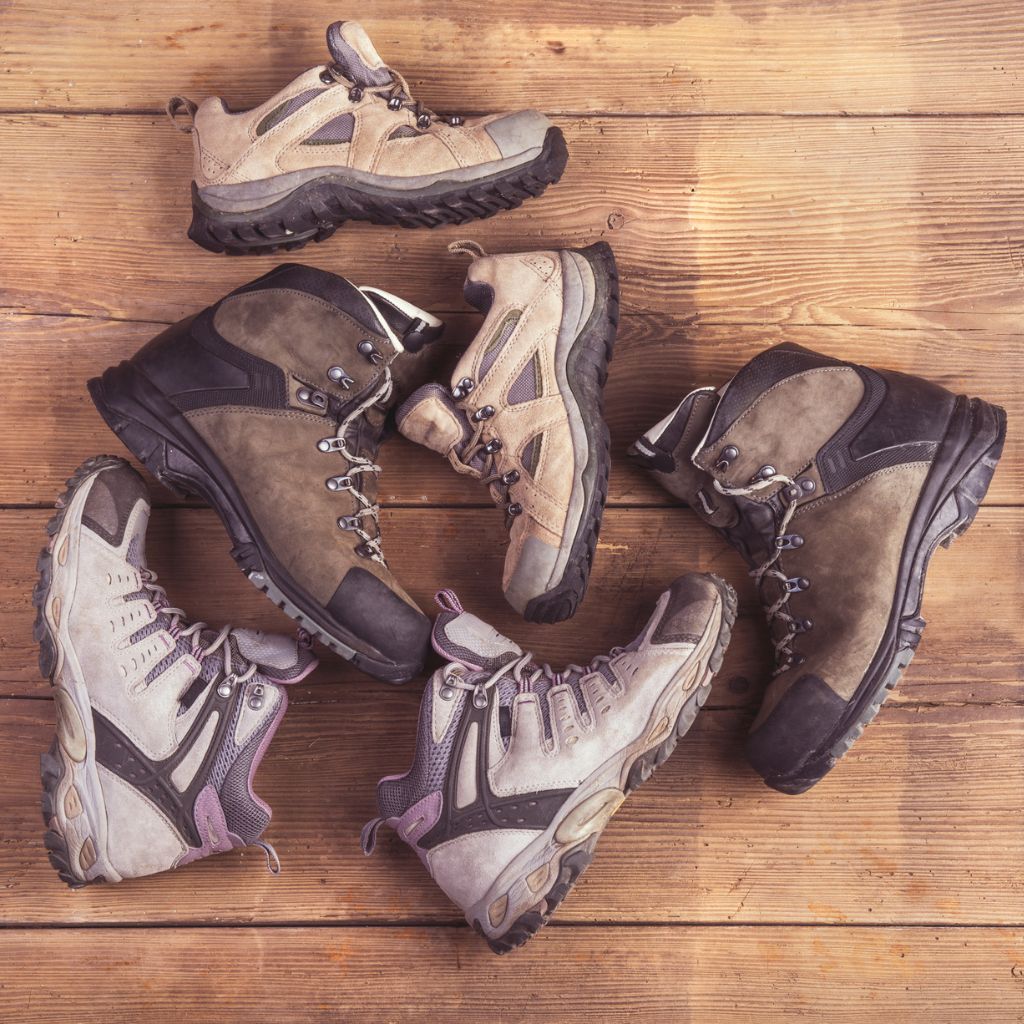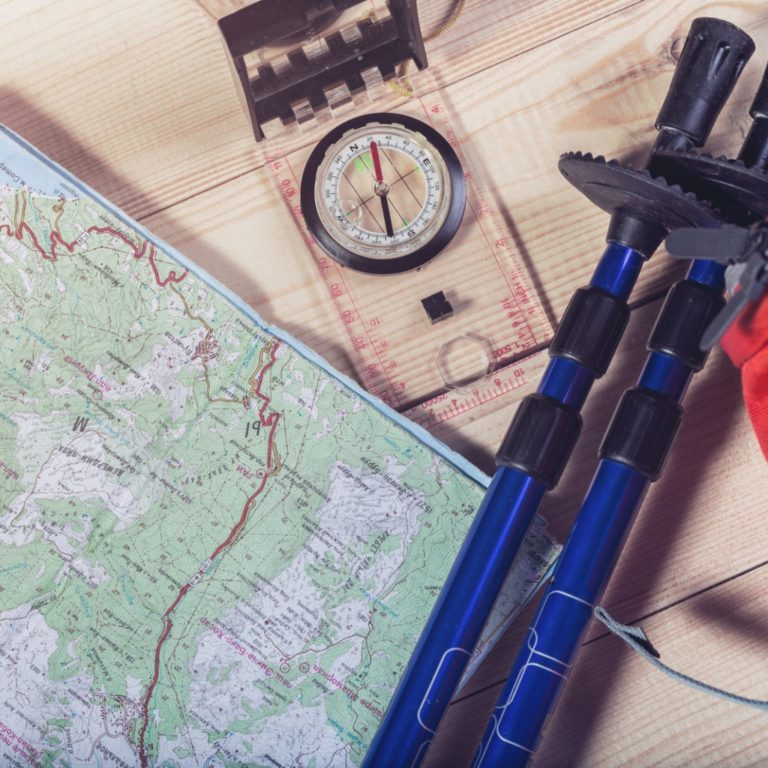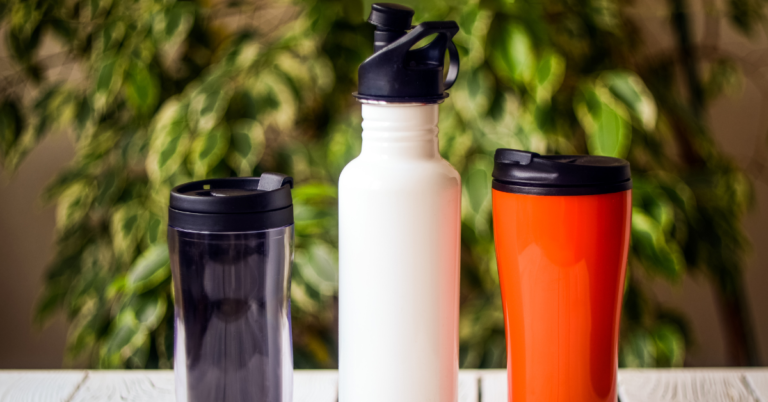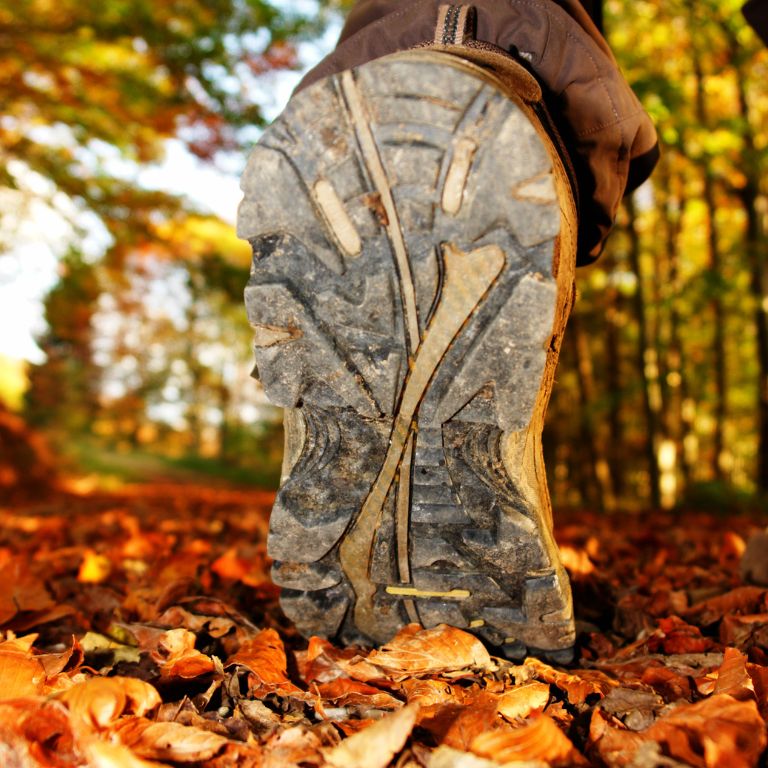Hiking In Sneakers For Beginners

The Ins and Outs of Trail Appropriate Footwear
If it’s your first time hitting the trails, you may find yourself wondering what to wear, especially on your feet. After all, there’s nothing worse than walking for hours in shoes that end up leaving you with blisters. But at the same time, do you really need to spend hundreds of dollars on professional hiking boots? Can’t you instead just wear your regular sneakers? The answer – probably. While more serious hikers will most likely need some sort of designated hiking shoes, the occasional hiker, especially those just starting out, can usually get by with standard run-of-the-mill sneakers. That being said, every hike is different. Every hiker is unique. Before you head out on the trail, it’s important to take a few moments to reflect on your personal situation and decide what works best for you.
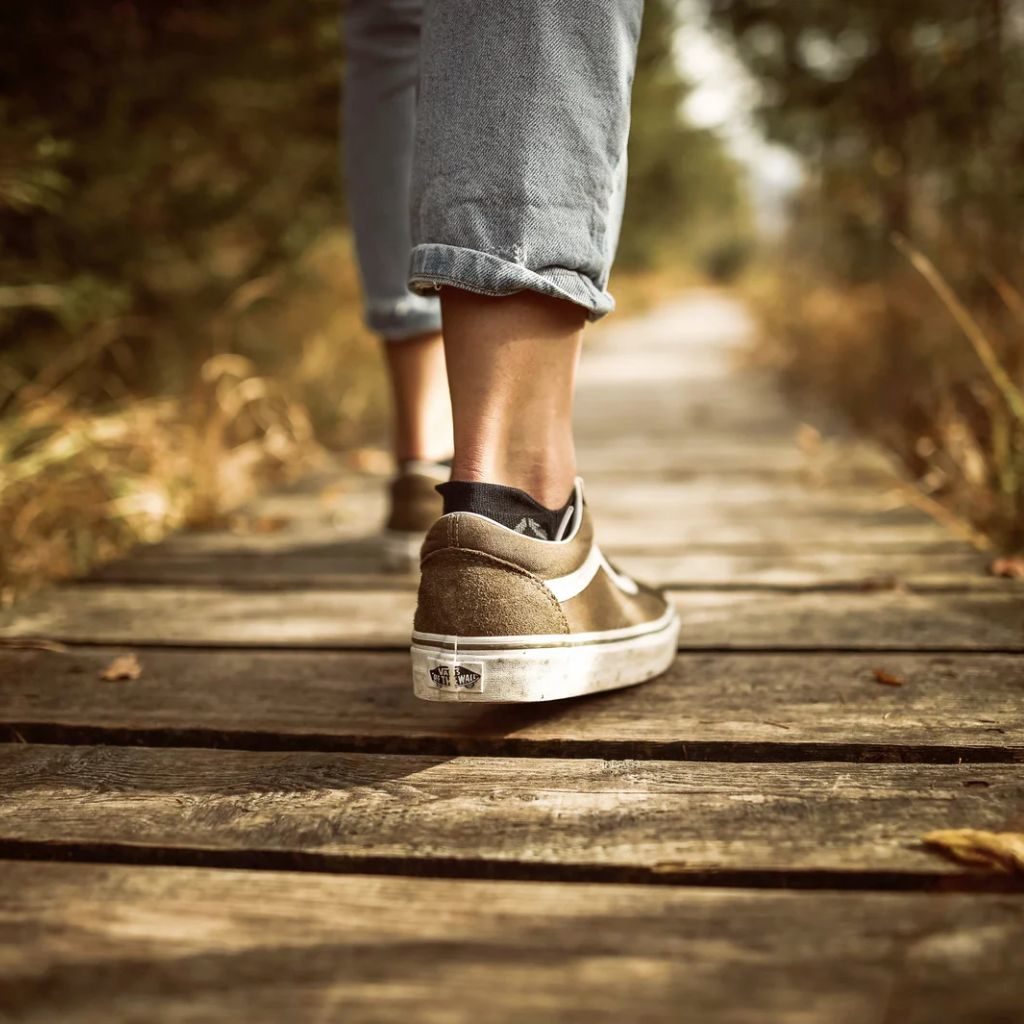
Common Types of Footwear
There are five main types of footwear that many hikers utilize. These include sneakers, running shoes, trail running shoes, hiking shoes, and hiking boots. While any of these are acceptable to wear on the trail, they each offer their own advantages and disadvantages. Generally speaking, sneakers and running shoes are the most affordable and easily accessible options. However, they do not provide as much support and protection because they are multi-purpose shoes. Meanwhile, trail running shoes, hiking shoes, and hiking boots are all designed specifically for hiking and, therefore, offer much more support, durability, and protection.
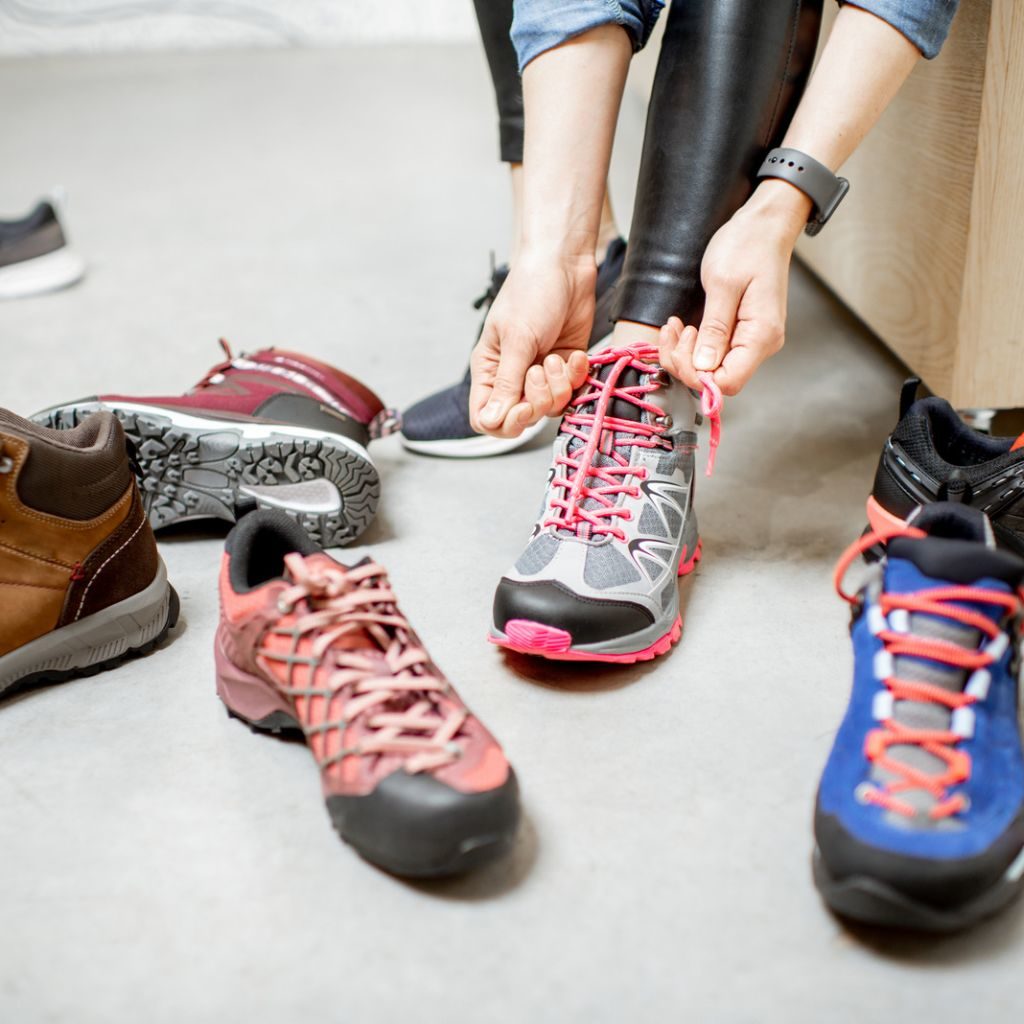
That being said, the level of support and protection you’ll find among hiking footwear varies. Each option is designed a bit differently and offers varying benefits. While hiking boots are the most supportive and durable, they’re also the heaviest and can be challenging to move around in. Meanwhile, trail running shoes are much lighter and easier to maneuver but don’t offer as much support and protection. Finally, hiking shoes fall somewhere in the middle, providing a decent amount of support and protection while maintaining a modest weight.
What to Wear and When
Which of these shoes you opt to wear will depend upon a variety of factors. Some factors include your budget, personal preferences, physical condition, and the difficulty of the trail you intend to hike. To help you break down what to wear and when, we’ll explore each option in more detail, highlighting the pros and cons of various types of footwear.
Hiking in Sneakers
Sneakers are a great option for those who are new to hiking and not ready to invest in hiking footwear. Chances are, you probably already have a pair of sneakers lying around the house somewhere that you can simply grab and hit the trails with. This convenience and affordability make sneakers a common choice among new and occasional hikers. In fact, I started out my own hiking journey with regular, every day sneakers. I used to hike regularly in a pair of Saucony Cohesion sneakers. They were not only affordable but comfortable as well. It wasn’t until I started hiking more often and taking on more difficult trails that I made the switch over to actual hiking footwear.
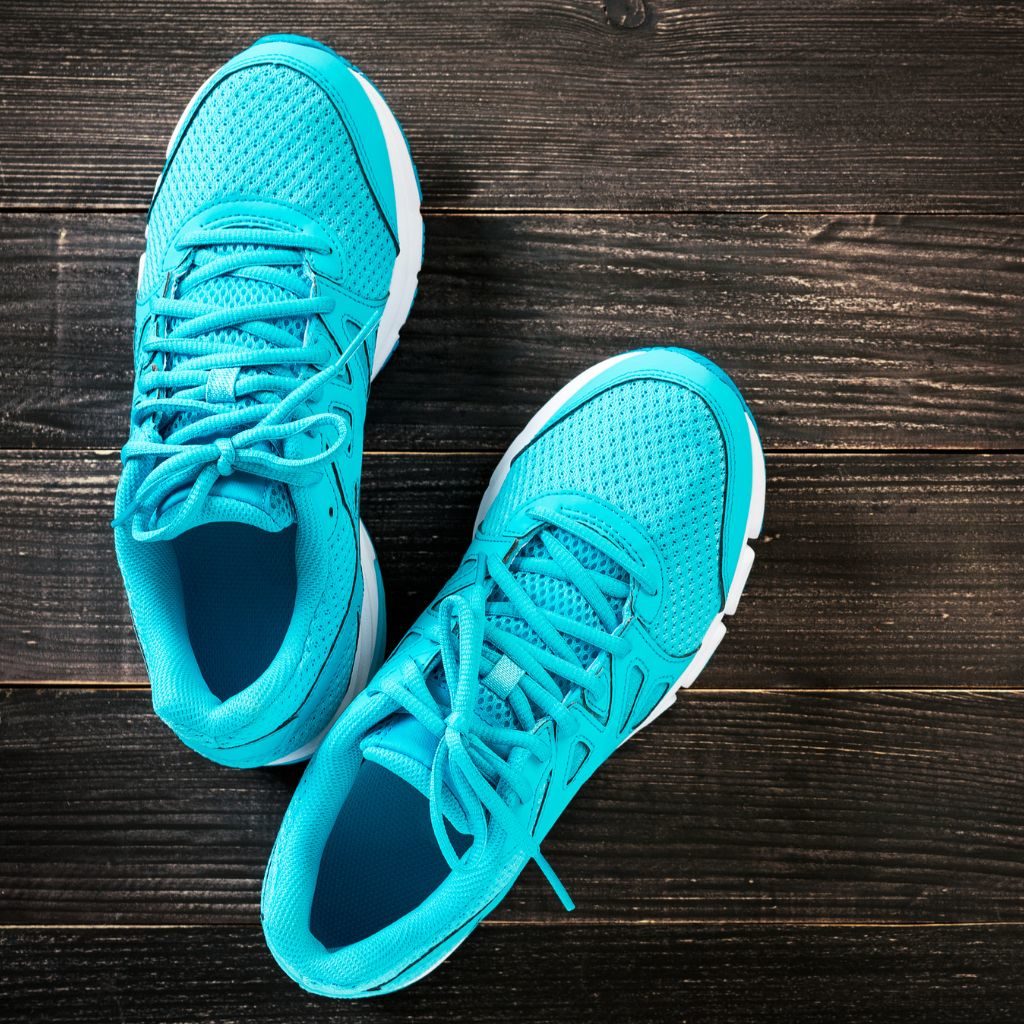
The same holds true for many other hikers as well. Since sneakers work great on beginner trails, they’re an easy go-to when you’re just starting out. As long as the trails you explore are relatively flat, even, and short, you shouldn’t have any problems hiking in your sneakers. That is, of course, as long as you don’t have any medical conditions that need to be taken into consideration. If you do have some physical limitations, it’s probably in your best interest to obtain hiking footwear that will provide you with more ankle support, as sneakers are not as protective and supportive. Similarly, if you plan on hiking longer, more challenging trails, it’s advisable to invest in more supportive footwear that’s built specifically for hiking.
Hiking in Running Sneakers
Like sneakers, running shoes are another great option to consider for new and beginner hikers. Not only are they more affordable than most hiking shoes, but they’re also great for easy trails that are even, short, and relatively flat. As long as you don’t have any medical conditions that require ample support and you don’t plan on exploring difficult or challenging trails, then you should be just fine hiking in your running shoes.

Running shoes are a great alternative to consider if you don’t want to risk damaging or dirtying your everyday sneakers. Remember, hiking trails can be muddy and messy at times! Especially if it’s been raining, so you should always come prepared to get dirty as well.
Hiking in Trail Running Sneakers
Trail running shoes are an excellent option for those who would like more support but don’t want to deal with the bulkiness of hiking shoes and hiking boots. Specifically designed for running on rugged terrain. Trail running shoes are supportive and protective but also lightweight and breathable at the same time. In fact, when I made the switch away from regular sneakers, I opted for a pair of Salomon trail running shoes because of their ability to provide support without the added burden of additional weight. On top of this, trail running shoes are known to offer better traction, especially along uneven terrain, and are more durable than regular sneakers and running shoes. Personally, I won’t hike in anything other than a trail running sneaker in the summer now.
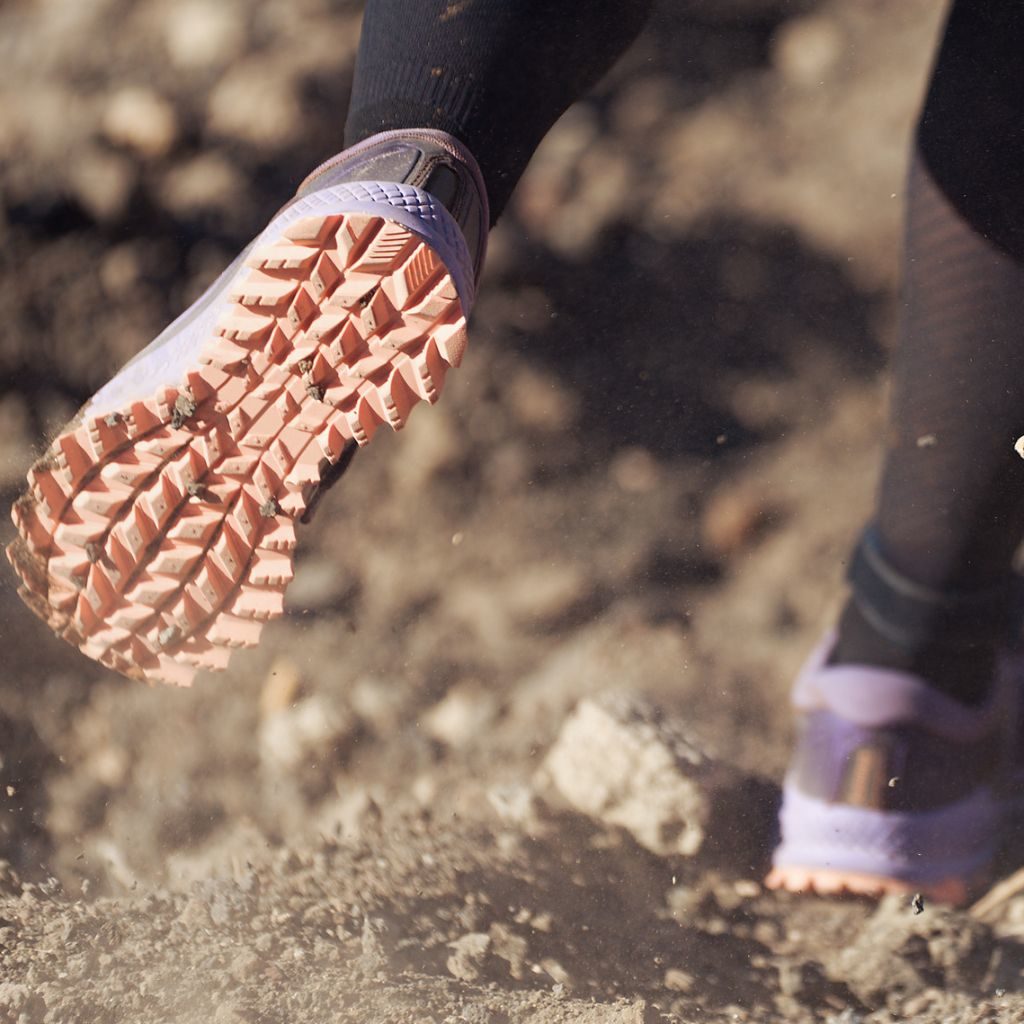
It’s important to note, however, that while trail running shoes are supportive, they aren’t as supportive and protective as hiking shoes and hiking boots. Therefore, if you require extra support, especially around your ankles, you should consider investing in proper trekking footwear.
Hiking in Hiking Shoes
If you’re looking for footwear that provides decent protection and support but isn’t quite so bulky and heavy, then hiking shoes are the way to go. Generally speaking, hiking shoes are a hybrid combo of trail running shoes and hiking boots. While they provide almost the same level of protection and support as hiking boots, they are typically lighter, more flexible, and more breathable. The material used on hiking shoes is generally thicker than trail running shoes, so you can expect them to be a bit heavier but also more durable than trail runners.
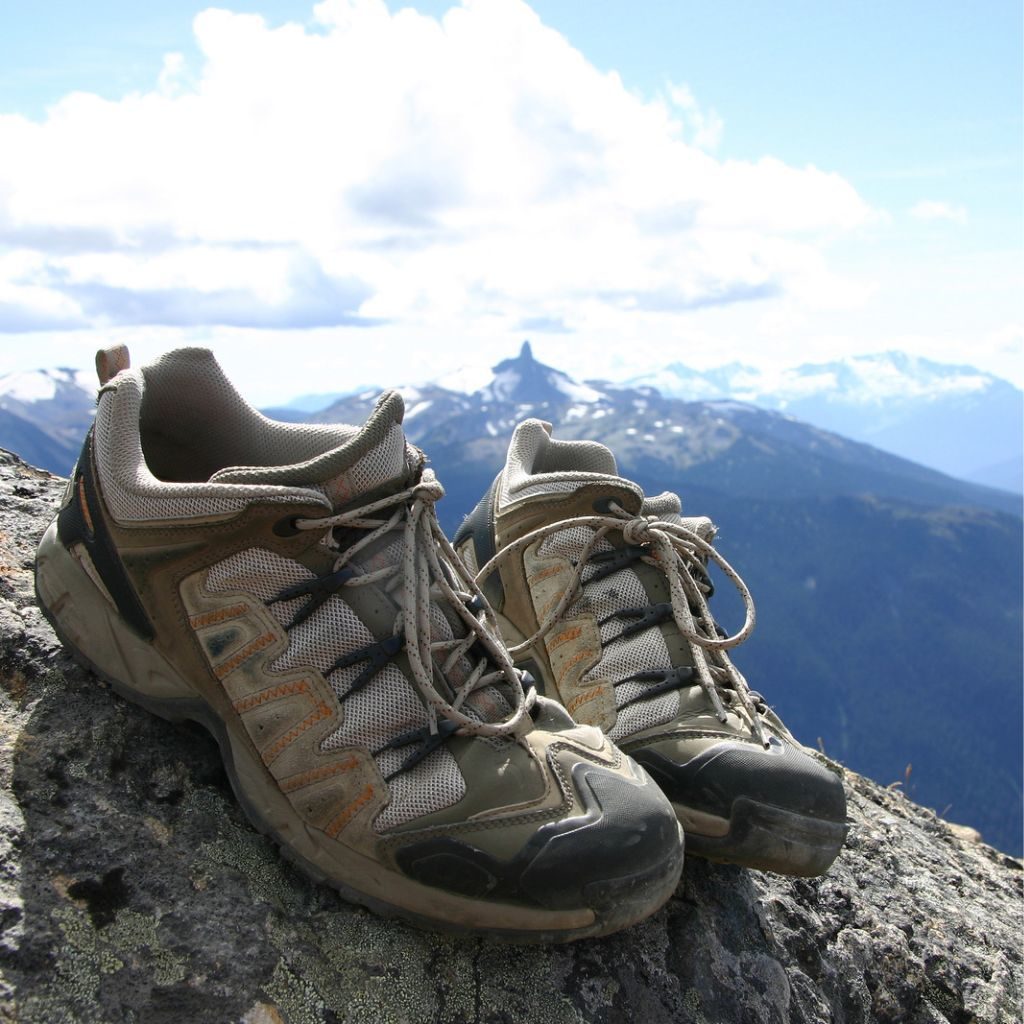
Overall, hiking shoes are great for a wide variety of hikes, including short-distance and long-distance trails. They can be used across an array of terrain, including off-trail and backcountry bushwhacking. Hiking shoes are what I use during the cold winter month. I personally love the Merrell Moab 3. They are sturdier than my Salomon Sense Ride sneaker but still just as breathable. And for those of us who have sweaty feet, we need breathable.
Hiking in Hiking Boots
For those in search of maximum protection and support, hiking boots are, without a doubt, the way to go. Not only do they provide ample ankle support, but they are also slip-resistant, waterproof, and warm. This means that you can even use them in the colder months if you ever decide to try winter hiking. In addition to this, they are great across all types of terrain and are perfect for off-trail explorations. And the best part is, they are super durable and last forever. So if you’re an avid hiker (or plan to be), hiking boots are well worth the investment.
Now, I personally don’t like to wear a boot, however Alex prefers them. He needs extra ankle support and likes the feel of them while hiking. Alex swears by the Oboz Sawtooth Hikers.
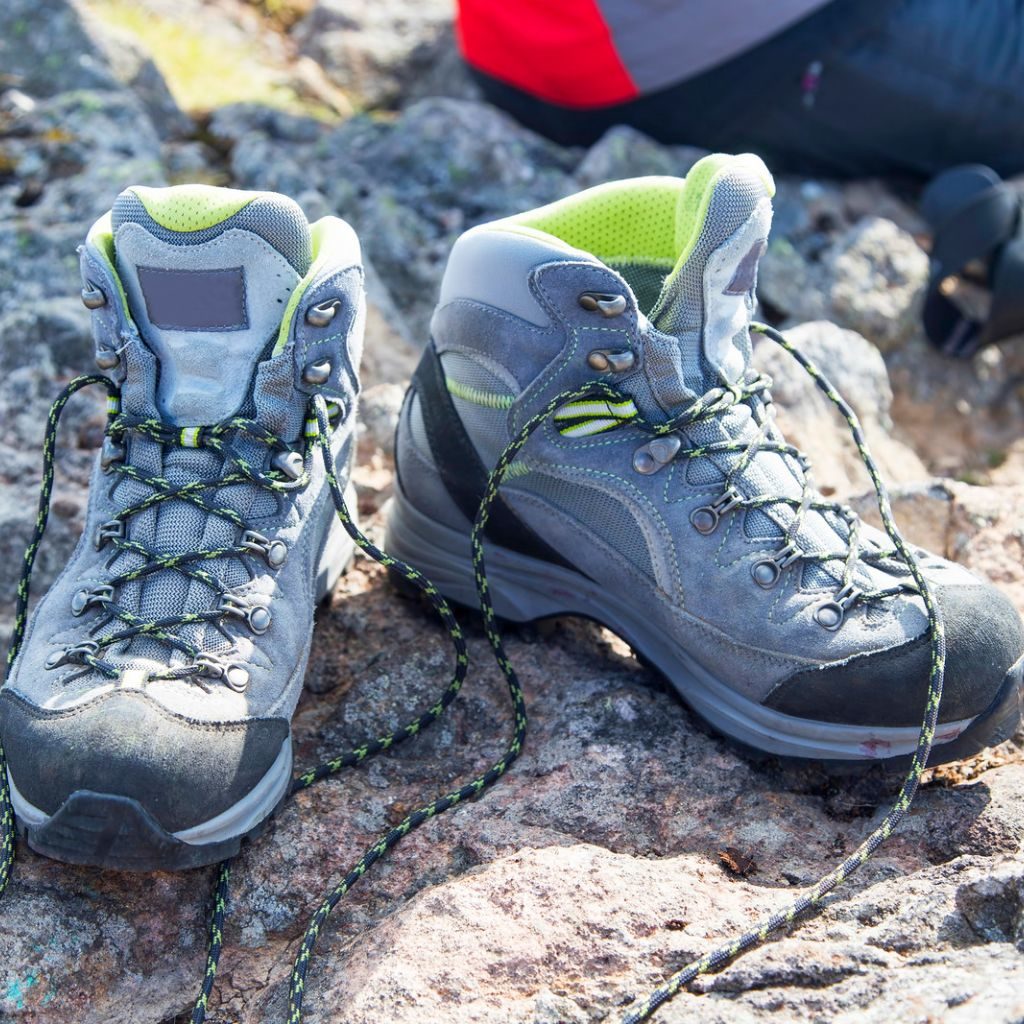
With this level of protection and durability, however, comes a few concessions. Hiking boots are typically the heaviest of all hiking footwear and do require a bit more energy to hike with. Their bulkiness also makes them more difficult to travel with. So if you plan on venturing off on an outdoor vacation, you may be better off packing something a bit lighter.
Common Comparisons
Many hikers who decide to invest in footwear find themselves torn between a few different options. For those looking for lightweight support, it becomes a question of trail running shoes versus hiking shoes. Meanwhile, those who place maximum support first and foremost usually find themselves debating between hiking shoes and hiking boots. While there is no one clear answer to either of these questions, we’ll break down the differences, so you can decide what works best for you.
Trail Running Sneakers vs. Hiking Shoes
Generally speaking, trail running shoes are lighter and more breathable than hiking shoes, while hiking shoes are more supportive and durable. They both are great options on short and long-distance trails and can handle a variety of terrain. Hiking shoes, however, do possess thicker soles that provide better traction and underfoot support, which is important if you plan on hiking off-trail. Meanwhile, trail running shoes are usually more flexible and allow for a wide range of movement, such as trail running.
Overall, trail running shoes are preferred among hikers who prioritize flexibility and movement. While hiking shoes are favored among those who want a bit of flexibility with ample support.
Hiking Shoes vs. Hiking Boots
While hiking shoes and hiking boots both offer great support and protection, hiking boots do provide a bit more support. They rise higher up on the leg and wrap around the ankle. Hiking boots are also typically made of tougher material, which makes them more durable but also heavier than hiking shoes. Meanwhile, hiking shoes offer a lower rise, so they aren’t as supportive around the ankle, but they are still very supportive and protective around the feet. In addition to this, they are typically lighter in weight, more flexible, and more breathable.
Generally speaking, hiking boots are preferred among hikers who prioritize support and durability. While hiking shoes are favored among those who like support but also want a lighter shoe that offers more flexibility.
Choosing the Best Footwear for You
“What type of footwear is best for hiking?”
This question commonly comes up among hikers, especially new hikers, as they prepare to hit the trails for the first time. And while it may seem easy enough to throw out an answer, the truth is – there is no one correct answer. What works for one person may not work for another, and vice versa. Everybody is different, every hike is different, every trail is different, and every shoe is different. It all just comes down to the individual and their personal preferences. I personally prefer a lighter more breathable trail running sneaker. Alex prefer a most stable hiking boot. We have have many debates about what is the best option when hiking.
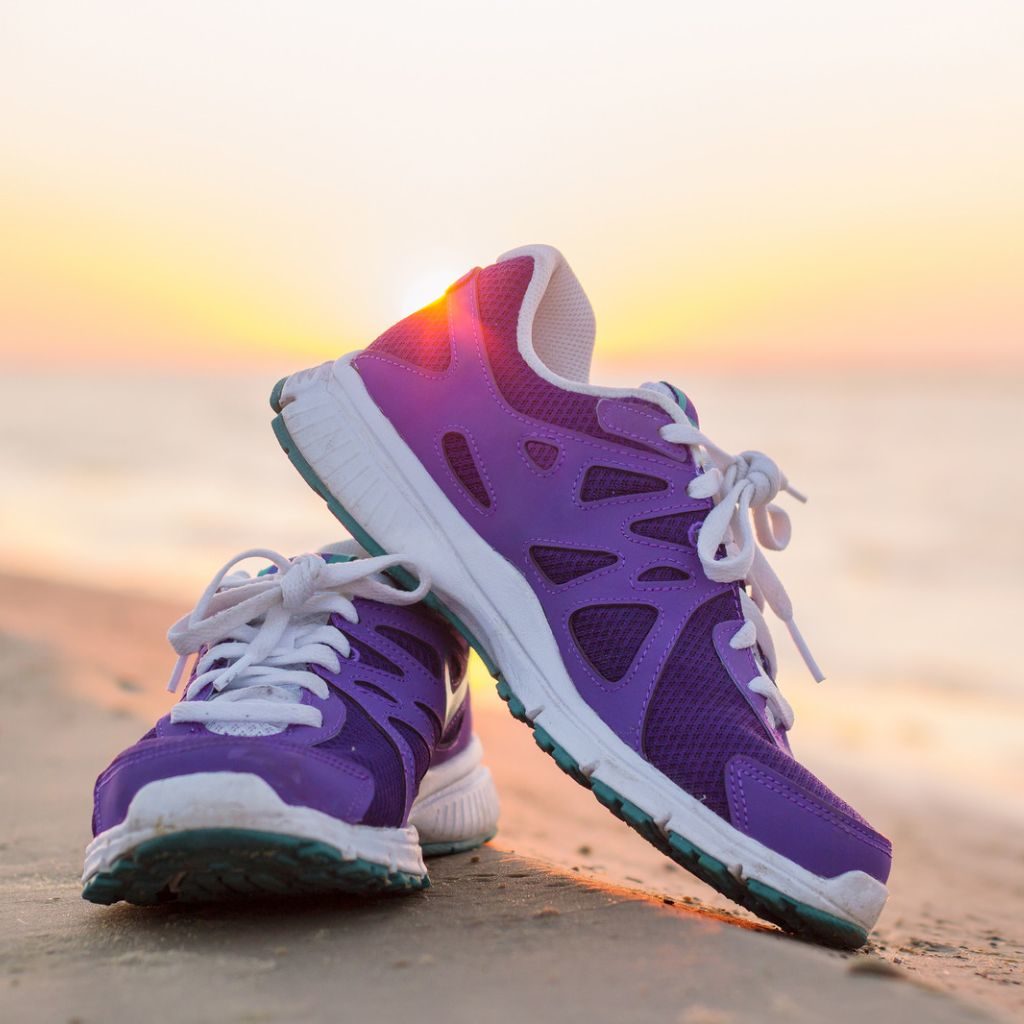
So while I can’t necessarily tell you what shoe is right for you, I can offer you some advice. And that is to pay attention to your body. Find what feels the most comfortable because, in reality, comfort is what matters most. If you want or need extra support, consider investing in hiking boots or hiking shoes. If you prefer to have more flexibility and sensitivity underfoot, then try out trail running shoes. And if you just want to give hiking a try, throw on those sneakers or running shoes and give it a try. At the end of the day, it’s all about you and what makes you the most comfortable!

